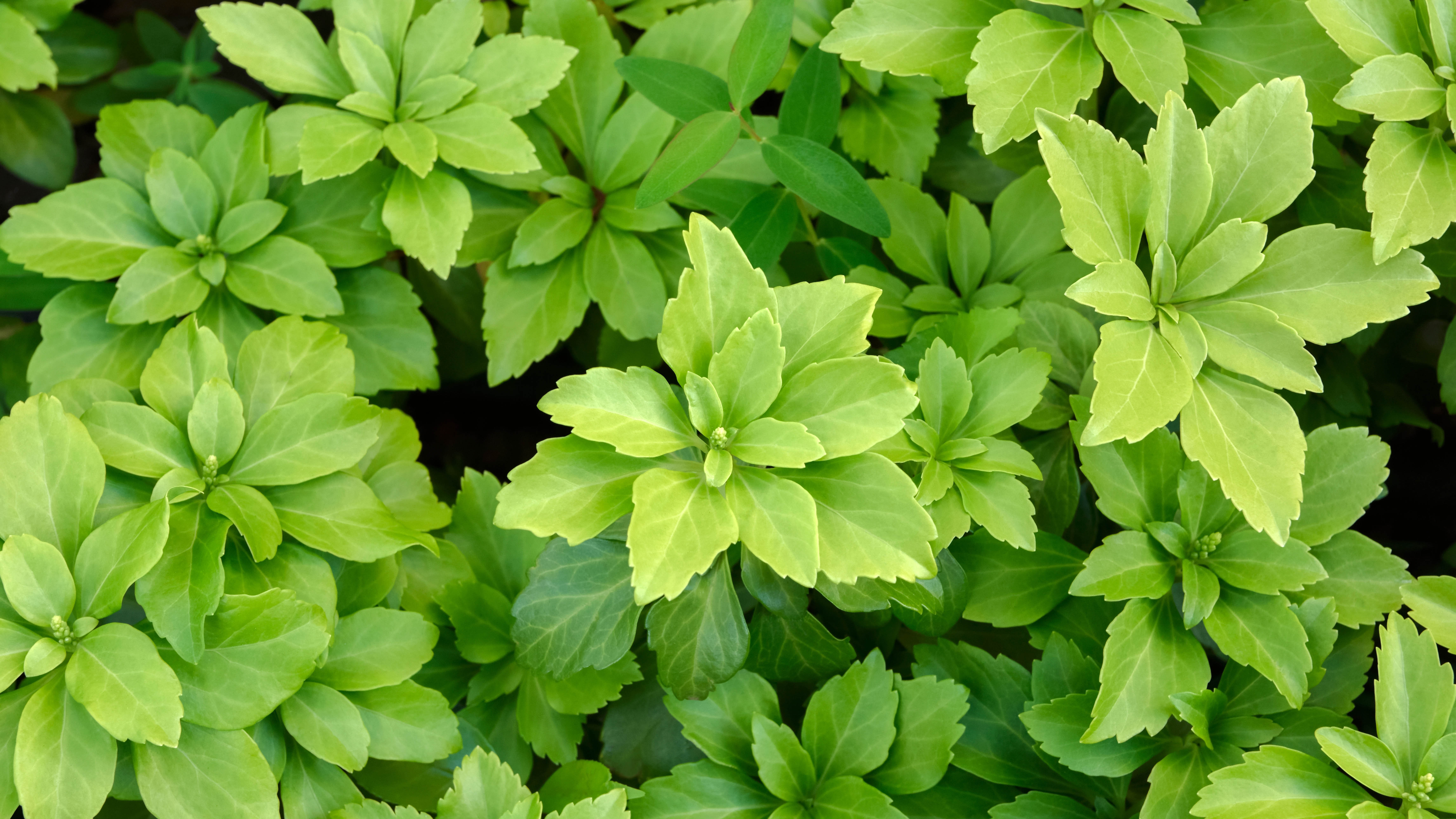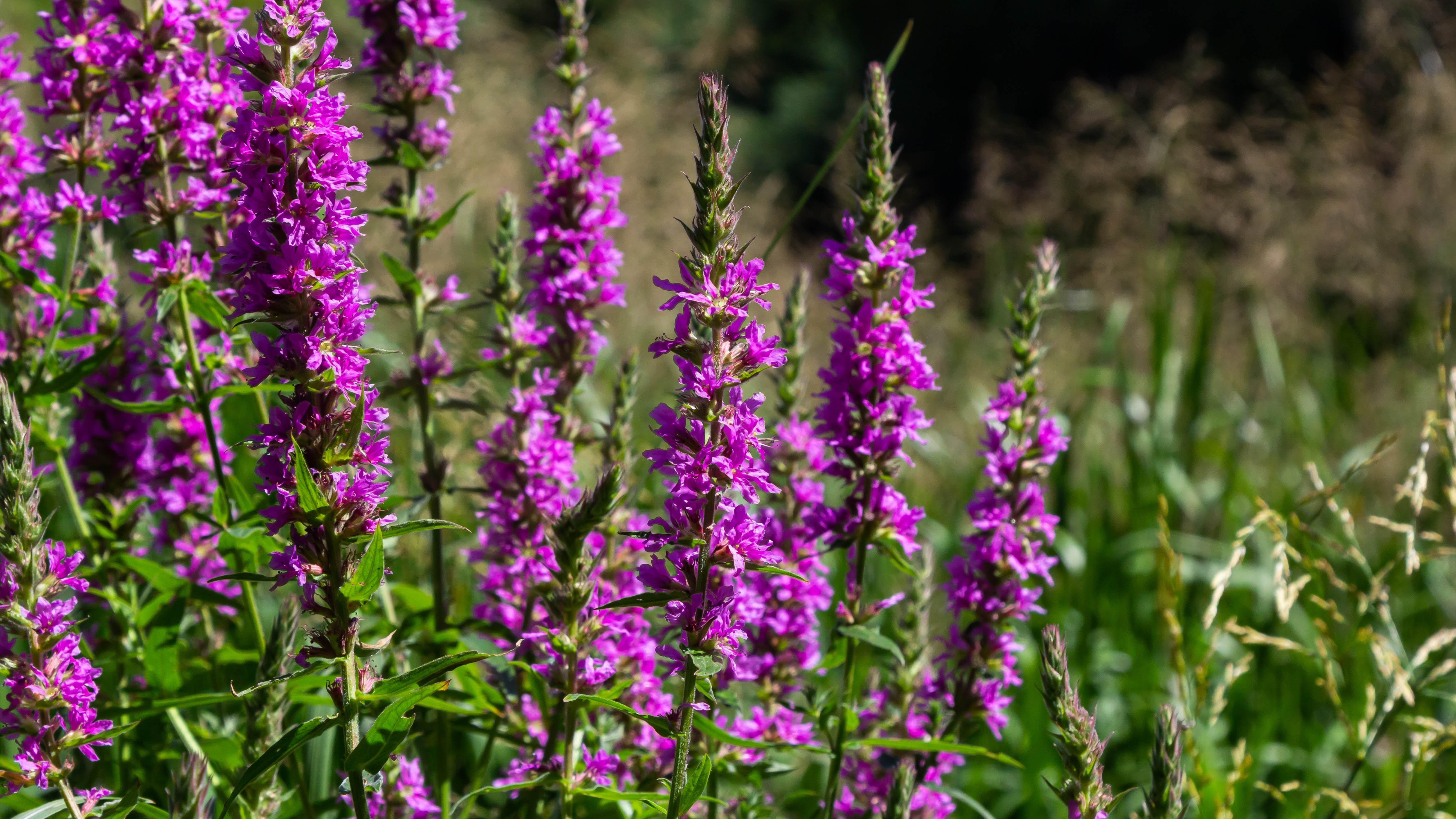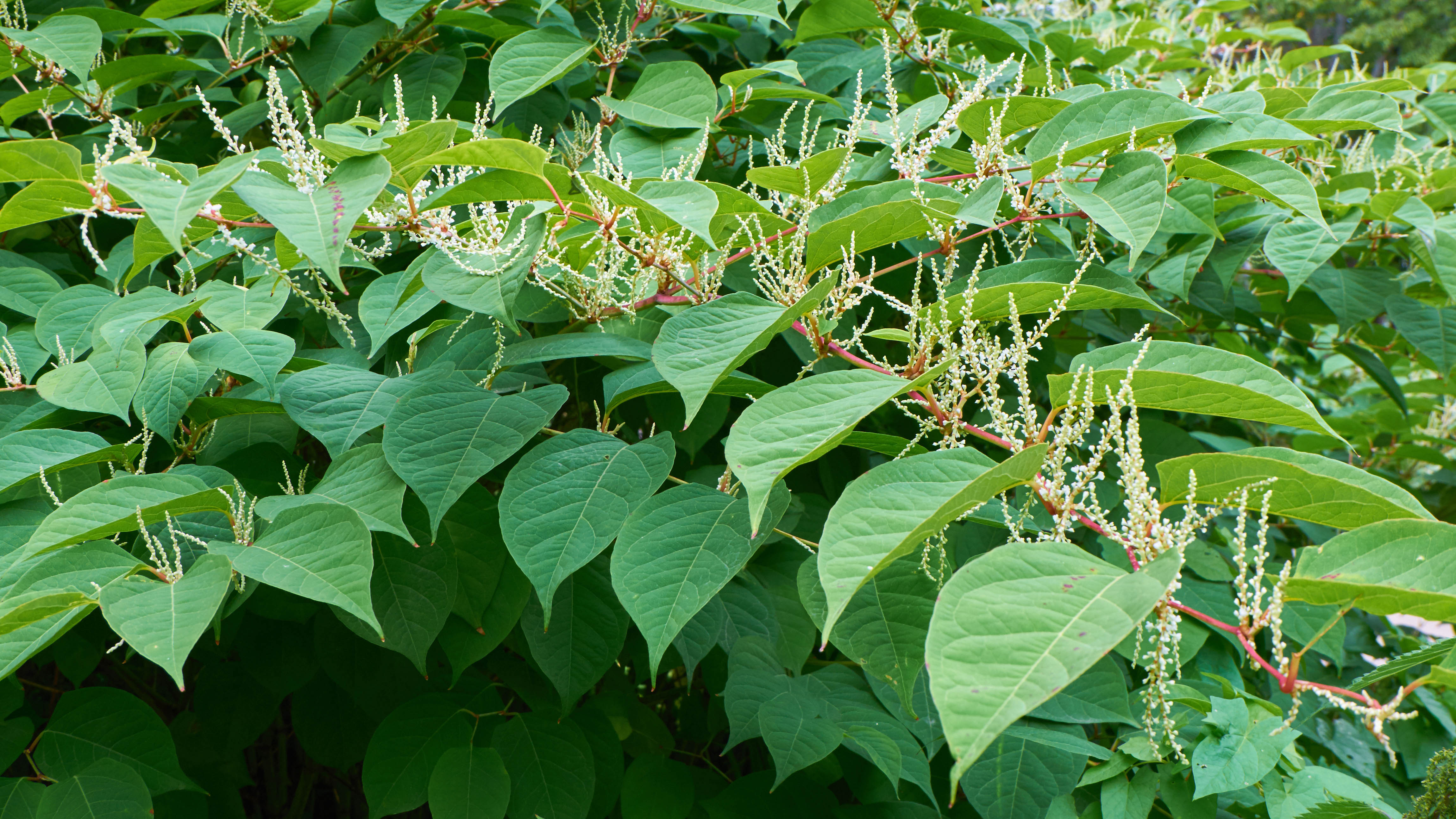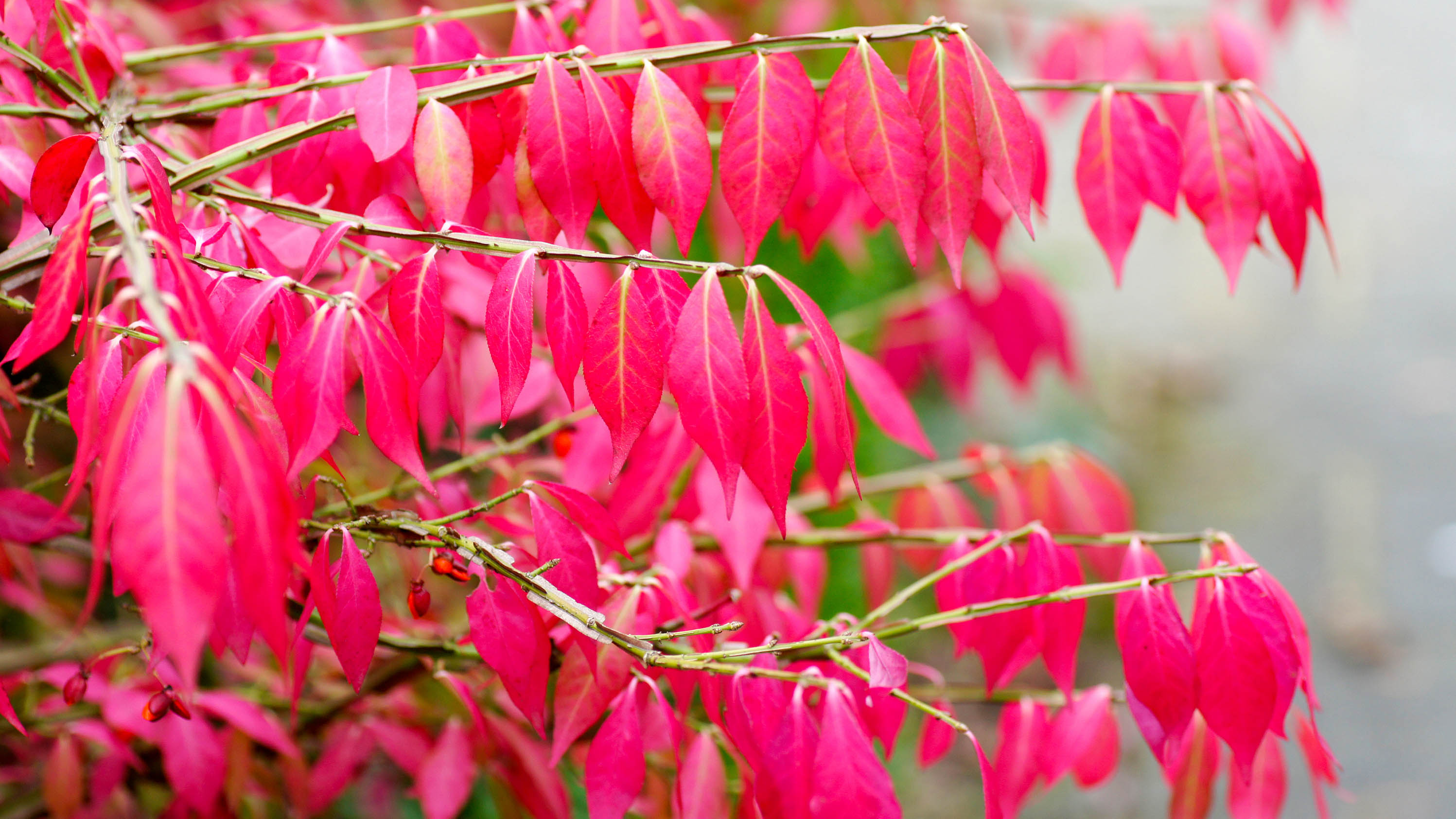9 invasive plants to keep out of your yard

With summer on the way, the flowers are in full bloom. We put every care and effort into our plants, learning how to prune hydrangeas as well as how to prune lilacs, to get the best display. But, one thing that can easily spoil your yard is an invasive plant.
As the name suggests, once these take root, invasive plants are all too difficult to get rid of. Add to that, these species move so quickly that they can consequently stunt native plant growth and reduce diversity, so they’re something to keep an eye out for and deal with promptly.
To help you out, we’ve listed 9 invasive plants to keep out of your yard. We will cover origins, growth rates as well as the best ways to remove and kill such plants, so your native plants can continue to thrive undisturbed.
Watch out for these 5 backyard plants that could damage your home as well. Plus, here are 3 weeds you should never compost, according to experts.
1. Kudzu

A vine native to Asia, the Kudzu plant was first introduced in 1876 and has been creeping its way through the American Southeast since. Growing at a rate of one foot a day Kudzu can spread up to 60 feet during its July-October season.
The long, grasping vines may look pretty but can completely cover a plot of land in no time. It can creep and climb, making sure that nothing else can live under it or survive. If you end up with a Kudzu infestation, you’ll need to rip the crown-like bulb at the base or use chemicals to kill it at the spot.
2. Japanese Spurge

Also known as Pachysandra terminalis, Japanese Spurge is a popular landscaping plant that flourishes in low light and is easy to grow under the right circumstances. It’s a fairly petty plant that only grows to a maximum of a foot off the ground and originated from East Asia.
Get instant access to breaking news, the hottest reviews, great deals and helpful tips.
But behind that green flourish is a dangerous evergreen perennial that can quickly spread over an area and deprive sunlight of anything beneath it. Killing it is also quite difficult since you’ll need to completely dig up the plant and remove its underground rhizomes or use chemicals. The partridgeberry is a solid replacement native to North America that grows well in shady woodland environments.
3. Purple Loosestrife

A perennial plant brought to the United States in the 1800s from Europe, Asia and Northwest Africa, the Purple Loosestrife is a lovely purple ornamental flower. It’s a very pretty plant that can grow very aggressively in the United States, completely swallowing large areas of wetlands and growing upwards of one foot a year. All it takes is one plant, which can produce 2 million seeds in just one growing season.
Because it grows into such a thick bunch, it can swallow up a lot of the resources and land. Due to the fast decomposition rate of the Purple Loosestrife nutrients necessary for tadpole development and survival are depleted earlier in the season and cause long-term harm to the local frog population and ecosystem. It's best to remove the plant in the summer months while it's a flower to prevent the seeds from being released during decomposition.
4. Japanese Barberry

Introduced in 1875 as an ornamental plant, the Japanese Barberry has made its way out into the wild in the midwest and eastern parts of the US. It can dominate a woodland area, edging out other plants for crucial soil and resources. With small oval leaves, a dark reddish hue, and small berries, the plant can also have its seeds transported by birds.
The thick spikes make it a noxious weed that’s become such a large problem that Pennsylvania banned the sale of Japanese Barberry in 2021. The PA Department of Agriculture is allowing certain seedless varieties of the Barberry to be exempt from the ban.
5. Bamboo

A delicious treat for a panda, bamboo is an incredibly dangerous plant to grow yourself. Bamboo is large grass with wood-like attributes with over 1,000 species, but planted varieties can be broken into two different types: “clumping” stays fairly close to the original plant in an enlarging circle, and “running” can quickly spread out over an area. Running bamboo is the more problematic species and will quickly spread out of bounds if you don’t have the plan to contain it.
And containing it isn’t easy. The plant's rhizomes, or underground stems, can grow up to a foot under the soil. You can deal with an infestation by removing the rhizomes or using chemicals, or you’ll need to chop the bamboo until it's about an inch or two tall multiple times in order to curb the spread. Should you really want to grow your own bamboo it’s best to plant it in a flower pot to prevent the inevitable spreading of the plant.
6. Japanese Honeysuckle

Introduced to the United States in the early 1800s, the Japanese Honeysuckle is as beautiful as it is dangerous. Its beautiful smell helps attract birds and other small animals that disperse the seeds far and wide, causing the flower to travel farther than your front yard.
The flower grows on an aggressive vine, taking over trees and flora, causing them to wither and die. Though the plant feels like a natural part of Americana, the plant is invasive and can seriously hurt local ecology so it's best to just avoid and plant a local flower, like an azalea or sunflower.
7. English Ivy

There’s no invasive plant quite as notorious as English Ivy. Brought over from Europe in the 1700s, this green vine can grow along almost anything and swallow it whole. Ivy can completely destroy trees, cutting them off from sunlight or causing their branches to get too heavy and break off. The plant also has berries that can be transported by birds, making the ivy travel even further. And it can be a safe haven for pests like insects and rodents, who can use the thick underbrush as camouflage or protection.
Once English Ivy has made its way into an ecological system, it's very difficult to remove and requires a skilled professional to be properly eradicated.
8. Japanese Knotweed

Japanese Knotweed is a well-known invasive plant, and for good reason. This shrub-like perennial can reach heights of 9 feet, growing at a rate of 4 inches per day. Native to East Asia, Japanese Knotweed grows in stalks, much like bamboo, and produces creamy, white flowers as well as stalks which have purple to red flecks. It’s generally considered a pest wherever you go, and is hardy enough to survive hot as well as cold climates — though it grows best in damp conditions.
Rather than seeds, Japanese Knotweed spreads via rhizomes found in the soil. This is why it’s so tricky to fully remove. Should the soil be disturbed, it can easily carry fragments of the Japanese Knotweed with it and grow a fresh plant all too quickly. The best way to kill Japanese Knotweed is by repeated application of a dedicated non-selective herbicide. You will need to be patient as well as persistent to see results. Alternatively, you can keep cutting it back using the best pruning shears, smother it with a thick tarp until it dies naturally, or dig up the rhizome root system — you need to be thorough with this last method.
9. Burning Bush

Native to northeastern Asia, nowadays the Burning Bush plant isn’t an uncommon sight in American gardens. It features typical dark green leaves throughout the spring, which change to a prominent red color in the fall, seeming to droop along with the coloring. It's a pretty addition to our list to say the least. It’s not as fast-growing as some of the other plants either, growing at a rate of 1-2 feet per year. However, it’s easily spread via the berries and suckers and can grow in abundance quickly.
It’s such a problematic plant that it's become classified as invasive in some states and consequently the selling of it is banned. Should you want to remove Burning Bush, the best method involves cutting it back and then digging up the roots. Be sure to remove all traces or else it can grow back. For this reason, make sure you collect any berries which fall loose. Alternatively, you can use a dedicated herbicide to aid with removal.
How to remove an invasive plant
Each different species and breed of plant non-local to your area should be contained or removed entirely. One seed can sprout and create a cycle that brings in more plants. Most invasive species can be killed with a specific chemical, but that can also endanger other wildlife. Your best bet is to figure out the specific species and cull its roots. It may take multiple seasons or growth cycles, but eventually, the plant will no longer dominate the foliage. Each area of the country has its own list of local wildlife, so make sure to consult that first before you start randomly planting.
More from Tom's Guide
Steven Asarch is a writer and editor who lives on Twitch and YouTube. After graduating from Baruch College, he wrote for IBT Media, Newsweek and Insider. In 2021, he executive produced the docu-series "Onision in Real Life" on Discovery +. As someone always looking to have the best smelling apartment possible, he's made it his mission to find the best air purifiers out there. His home has since become an air purifier haven, having stored and tested ten models for over three months. You could say he now knows everything there is to know about air purifiers, and what separates the good from the best.
- Katie MortramHomes Editor

